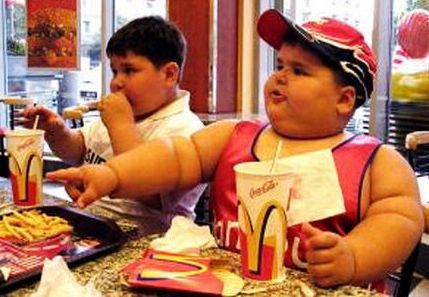The severe obesity rate of young children has tripled in the past 25 years, putting many children at risk of diabetes and cardiovascular disease, according to a report in the Academic Pediatrics magazine of a fat expert. Obesity at Brenner Children's Hospital, University of Wake Forest Baptist Medical Center.
Dr. Joseph Skelton, lead author of the report and director of the FIT Program (The whole family practiced) Brenner, said: 'Children are not only becoming obese, but becoming becoming obese. severe, and very bad effect on their general health. The findings in this report reinforce the fact that medical programs that treat obesity are essential throughout the United States and that insurance companies should be encouraged to pay for these programs. '
The study is published online and will appear in the print version in September. Skelton and colleagues compared data from the National Health and Nutrition Assessment Survey (NHANES).They found the prevalence of severe obesity and obesity in a survey of 12,384 children, representing about 71 million children across the United States between the ages of 2 and 19.
Severe obesity is a new classification for children and describes children with body mass index (BMI) equal to or greater than the 99th indicator for age and gender. For example, a 10-year-old child with a BMI of 24 will be classified as severe obesity, while in an adult, this index is a normal BMI. The panel of experts, convened by the American Medical Association, the Centers for Disease Control and the Department of Health and Health Services, introduced this classification in 2007.
 Severe obesity rates in children are high (Photo: ithoughtitwasthetrash.files.wordpress.com)
Severe obesity rates in children are high (Photo: ithoughtitwasthetrash.files.wordpress.com)
Skelton and colleagues' research is the first to use this new classification and describe in detail the seriousness of the problem.They found that the 'prevalence' of severe obesity has tripled (from 0.8% to 3.8%) in the period 1976-80 to 1999-2004. Based on this data, about 2.7 million children in the United States are classified as severe obesity.
The increase in severe obesity is highest in blacks and Mexican Americans, and also among those below the poverty line. For example, the percentage of Mexican-American children in the list of severe obesity was 0.9% in the 1976-80 period and 5.2% in the 1999-2004 period.
The researchers also recognized the effects of severe obesity and found one-third of severely obese children with metabolic symptoms, a group of risk factors for heart attack, stroke and diabetes. Street.These risk factors include higher blood pressure, insulin and higher cholesterol levels.
The researchers wrote in the report: 'These findings show the health risks faced by obese children. This also raises the need for health care and community services, especially because the highest rates belong to the group of children who are not regularly cared for. '
The research was funded by the National Institutes of Health and Robert Wood Johnson Foundation.
Co-authors include: Stephen Cook, Peggy Auinger, Jonathan Klein, School of Medicine and Dentistry, University of Rochester; and Sarah Barlow, Baylor College of Medicine
 Green tea cleans teeth better than mouthwash?
Green tea cleans teeth better than mouthwash? Death kiss: This is why you should not let anyone kiss your baby's lips
Death kiss: This is why you should not let anyone kiss your baby's lips What is salmonellosis?
What is salmonellosis? Caution should be exercised when using aloe vera through eating and drinking
Caution should be exercised when using aloe vera through eating and drinking